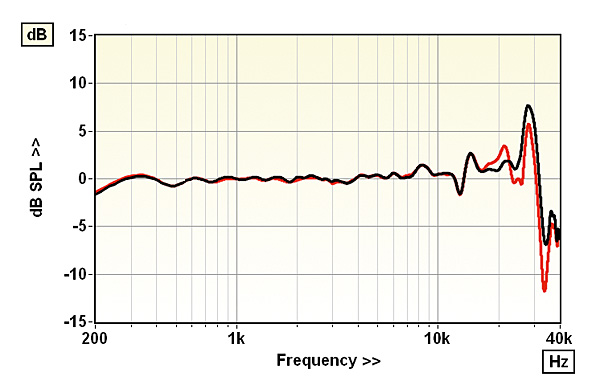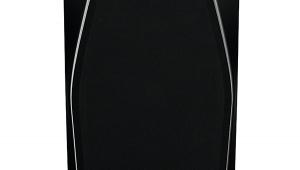Kii Audio THREE loudspeaker Lab Report
Its forward frequency response, measured at 1m on the tweeter axis [Graph 1], provides some evidence of this. It is, to within tight limits, flat, the response errors being ±2.1dB for both speakers, 300Hz-20kHz. Below 12kHz this reduces to ±1.1dB and in reality will be less because the ripples below 1kHz are an artefact of time-windowing the impulse response to remove room reflections. This isn’t quite the ±0.5dB that Kii Audio claims but it’s remarkable nonetheless, particularly as it’s achieved using generic equalisation plus careful driver matching, not by individually EQ-ing each loudspeaker.


Pair matching, over the same 300Hz-20kHz, is ±0.8dB, reducing to an astonishing ±0.3dB below 15kHz. Also astonishing is that the response really does reach down to 20Hz. Although our diffraction correction utility isn’t designed for use with such a speaker, our corrected nearfield measurements indicate a sub-20Hz bass extension (–6dB re. 200Hz). At the lowest frequencies all four bass drivers operate in phase to share the excursion load but even so this bass extension will not be achievable at high output levels, which the DSP compensates for by raising the bass corner frequency. Above 50Hz, where the THREE is still omnidirectional, it quickly (within an octave) transitions to a cardioid polar response.
While it would need an anechoic chamber or outdoor measurement to see this clearly, I performed off-axis measurements out to 90° using an Outline turntable which confirmed that up to 1kHz the response steps down progressively and remains almost as flat as claimed. The cumulative spectral decay waterfall [Graph 2] is also very clean, with little evidence of treble resonances. KH
Frequency response error (300Hz–20kHz): ±2.1dB / ± 2.1dB
Pair matching (300Hz–20kHz): ±0.8dB
LF/HF extension (–6dB ref 200Hz/10kHz): <20Hz / 37.2kHz/33.1kHz
THD 100Hz/1kHz/10kHz (for 90dB SPL/1m): 3.4% / 0.1% / 0.4%
Dimensions (HWD) / Weight (each): 400x200x400mm / 15kg
Price: £10,990-£12,480 (£995 stands)
























































